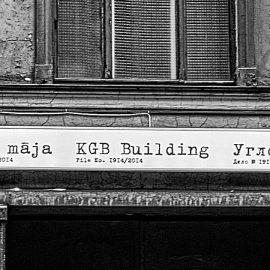

This article is an excerpt from the Shortform book guide to "The Power of Habit" by Charles Duhigg. Shortform has the world's best summaries and analyses of books you should be reading.
Like this article? Sign up for a free trial here .
What are organizational habits? How can having strong habits help organizations run more smoothly?
Organizational habits are the ones that companies use to maintain structure and balance. There are both good and bad organizational habits.
Read more about organizational habits and why they’re so important.
Organizational Habits
One would think that a company’s behavior, and their employees’ behavior, is defined by rational, deliberate choices at each step. But organizational habits matter.
In reality, much of employee behavior comes from habits grandfathered in from the past. Employees rely on routines to guide their behavior – for instance, many companies have a standard bonus and promotion track. In the typical environment, employees know that if they keep their head down, work hard, and don’t cause trouble, they’ll be rewarded with bonuses and promotions at a predetermined schedule.
The utility of habits here is the same as personal individual habits – it saves energy when you don’t have to question why you behave every day. Routines help stuff get done without falling into paralysis. They allow employees to make progress without having to reinvent things all the time or ask for permission at each step.
Organizational habits can be constructive or destructive. Often destructive habits are created without deliberate planning, instead growing organically from rivalries, fear, or ego.
The book argues that the natural state of a company is of conflict. Executives compete for influence and credit from achievements. Different teams compete for resources and attention. Employees compete against each other to gain favor with managers and snag a promotion.
Habits are actually useful in brokering peace. Conflicting parties come together and agree on a set of behaviors that everyone will follow, so that the company overall benefits and everyone gets paid.
For example, salespeople are often tempted to give big discounts to clients to land a sale. But if everyone did this, the company would go bankrupt. So the sales team decides internally to limit the discounts each person can give so that the entire team can succeed.
Similarly, departments want to maintain control over their jurisdiction and prevent power grabs by other departments. So different departments agree on habits to avoid turf battles – don’t intrude on our space, and we won’t intrude on yours. This leads to the natural pushing away of responsibiltiies: “this isn’t a sales problem, it’s an engineering problem.”
Habits broker peace between warring factions. Break these habits, and you’ll be alienated as a disruptor.
Of course, the problem with these habits is that at times they can be destructive. Sometimes problems appear that perfuse the entire organization. If departments maintain clearly defined boundaries, no one claims responsibility for these problems. The anecdotes below will illustrate the example.
And over time, these habits become calcified – they become a part of the organization’s DNA, new employees quickly adopt the habits to fit in, and the cycle perpetuates.
To resolve this, companies need to deliberately cultivate habits that allow one priority to overshadow everything else, even though it might temporarily disrupt the balance of power. The Alcoa anecdote above illustrates this well – worker safety was elevated to be the primary responsibility of all departments. If another department pointed out a safety problem in another department, they would be rewarded, not punished. This keystone habit eventually led to systemwide improvements in communication, collaboration, and morale.
Because these habits can become deeply ingrained in a company culture, they can be hard to change at will. The best opportunity to change them are in times of crisis, when people feel something must change for the organization to survive. This is when habits are most malleable. In these moments, you can promote and articulate a sense of emergency. Here arer some examples of organizational habits.
Example: Habits in the Operating Room
In 2000, Rhode Island Hospital, the teaching hospital of Brown University, was a wreck. Some doctors habitually bullied nurses, chastising them for correcting the doctors.So to avoid punishment, nurses had secret habits – they communicated through marker color who the bad doctors were (green for good, black for bad). Around bad doctors, you needed to keep quiet when they got pushy. Nurses also quietly covered for doctors, fixing incorrect medication doses and fixing doctors’ unintelligible handwriting.
Ultimately, this led to several high profile reports on mistakes. In multiple cases, surgeons operated on the wrong side of the head, with one case leading to death.
A crisis had occurred. The entire surgical ward was shut down for a day for training. New habits were instituted, like checklists for every operation and video cameras recording every surgery. At this time of crisis, no matter how vehemently the doctors opposed these practices, the elevation of patient safety to supersede the organization led to radical change.
These new practices dramatically improved patient safety and reduced medical error, and likely led to better morale across the team.
Example: Destructive Habits Leading to a Tragic Subway Fire
In 1987, a fire occurred at King’s Cross Station, a major interchange in the London subway system. 31 people died, and 100 people were injured. A review showed that destructive habits had set in that prevented departments from taking ownership over the event of a fire:
- A ticketing clerk noticed the first sign of a burning tissue. He put it out, but didn’t think to report the issue – that wasn’t part of his department’s responsibility.
- The station employees weren’t trained to use the sprinkler system, and another department controlled the fire extinguishers.
- When they arrived, the fire brigade used their department’s street-level hydrants rather than the subway-level hydrants, because they were instructed not to use the equipment of other agencies.
- Well before the event, the risk of a fire had already been reported, but they were ignored.
The insidious problem is that all of these habits were adopted for good reason. At one point, ticketing clerks went outside their formal duty by helping tourists and picking up trash, and this caused delays in issuing tickets to riders. So a new policy forced ticketing clerks to keep within their jurisdiction in the interest of efficiency.
Ultimately, no one had final responsibility for passenger safety. Insufficient training meant departments didn’t know how to collaborate in emergencies.
Just as with the Rhode Island Hospital, the crisis spurred major overhauls to the organization.

———End of Preview———
Like what you just read? Read the rest of the world's best book summary and analysis of Charles Duhigg's "The Power of Habit" at Shortform .
Here's what you'll find in our full The Power of Habit summary :
- The 3 steps to change your habits
- Why habits are at the root of success in football
- How social movements are just an expansion of habits from individuals to communities






